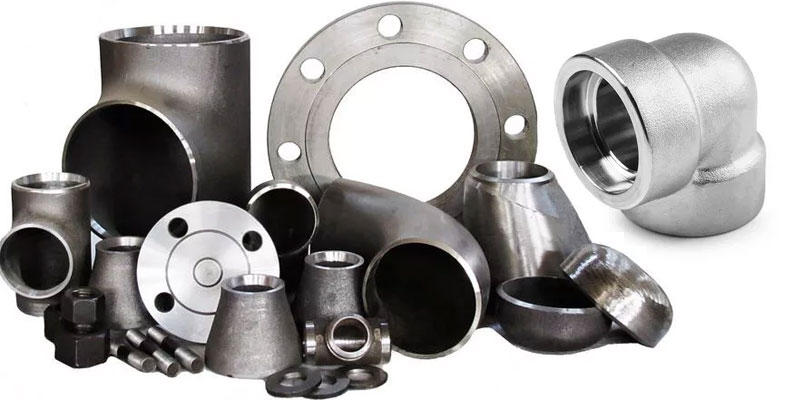
Image Source: Google
Steel pipe fittings are essential components in plumbing and construction projects. They provide a strong, durable, and versatile solution for connecting pipes and directing the flow of fluids.
Whether you are a homeowner looking to undertake a DIY plumbing project or a professional contractor working on a large-scale construction site, understanding the different types and uses of steel pipe fittings can help you complete your project efficiently and effectively. If you are looking for the best steel pipe fitting then contact Eco Fitting & Valve.
Types of Steel Pipe Fittings
Steel pipe fittings come in various shapes and sizes, each serving a specific function in a plumbing or construction system. Here are some common types of steel pipe fittings:
1. Elbow Fittings
- Used to change the direction of a pipe system
- Available in different angles, such as 45 degrees and 90 degrees
- Ideal for connecting pipes around corners or obstacles
2. Tee Fittings
- Shaped like the letter "T"
- Used to create branch lines in a pipe system
- Allow for the connection of three pipes at a single junction
3. Coupling Fittings
- Used to join two pipes of the same size
- Available in threaded or non-threaded options
- Provide a leak-proof connection between pipes
Uses of Steel Pipe Fittings
Steel pipe fittings are versatile components that can be used in a wide range of applications. Here are some common uses of steel pipe fittings:
1. Plumbing Systems
- Steel pipe fittings are commonly used in residential, commercial, and industrial plumbing systems
- They help to create a reliable and leak-free pipe network for carrying water, gas, or other fluids
- Steel fittings are resistant to corrosion, making them suitable for long-term use in plumbing systems
2. HVAC Systems
- Steel pipe fittings are essential components in heating, ventilation, and air conditioning (HVAC) systems
- They help to connect pipes, ducts, and other HVAC components to ensure efficient and effective operation
- Steel fittings can withstand high temperatures and pressure, making them ideal for HVAC applications
3. Industrial Applications
- Steel pipe fittings are widely used in various industrial settings, such as manufacturing plants and refineries
- They play a crucial role in transporting fluids, gases, and chemicals within industrial facilities
- Steel fittings are durable and able to withstand harsh conditions, making them suitable for industrial applications
Benefits of Steel Pipe Fittings
Steel pipe fittings offer several advantages that make them a popular choice for plumbing and construction projects. Here are some key benefits of using steel pipe fittings:
1. Strength and Durability
- Steel pipe fittings are incredibly strong and resistant to bending or breaking under pressure
- They have a long lifespan and require minimal maintenance, reducing the need for frequent replacements
- Steel fittings can withstand extreme temperatures and harsh environmental conditions
2. Corrosion Resistance
- Steel pipe fittings are highly resistant to corrosion, making them suitable for use in water and chemical applications
- They do not rust or deteriorate over time, ensuring a reliable and leak-free connection
- Steel fittings are easy to clean and maintain, prolonging their lifespan
3. Versatility
- Steel pipe fittings come in a wide range of sizes, shapes, and configurations to meet different project requirements
- They can be easily adapted or modified to fit specific installation needs
- Steel fittings are compatible with various piping materials, allowing for seamless integration into existing systems
Installation and Maintenance Tips
Proper installation and maintenance of steel pipe fittings are essential to ensure the efficiency and longevity of your plumbing or construction system. Here are some tips to keep in mind:
1. Use the Right Tools
- Ensure you have the necessary tools, such as pipe wrenches, pipe cutters, and thread sealant, for installing steel pipe fittings
- Use the correct fittings for your specific project requirements to prevent leaks or system failures
- Follow the manufacturer's instructions and guidelines for proper installation
2. Conduct Regular Inspections
- Inspect your steel pipe fittings periodically for signs of wear, corrosion, or damage
- Check for leaks or loose connections that may indicate a problem with the fittings
- Address any issues promptly to prevent further damage to your plumbing or construction system
3. Schedule Maintenance Checks
- Consider scheduling annual maintenance checks by a professional plumber or contractor to ensure the integrity of your steel pipe fittings
- Perform routine maintenance tasks, such as tightening connections or replacing worn fittings, to prevent costly repairs down the line
- Stay proactive in maintaining your plumbing or construction system to avoid unexpected issues and downtime

